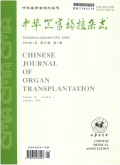中国儿童肾脏移植围手术期管理临床诊疗指南
Clinical practice guidelines for perioperative management of pediatric kidney transplantation in China
摘要终末期肾病患儿在生理、心理、病理生理、原发病和感染免疫状态等方面与成人患者差异较大,且供肾多来自儿童遗体器官捐献,围手术期管理要点与成人有诸多不同,有必要制定临床诊疗指南以进一步规范儿童肾移植围手术期管理。中华医学会器官移植学分会组织国内专家,基于国际循证医学标准制定本指南,围绕术前准备、术中管理和术后监测等方面凝练关键问题,并按照牛津大学证据分级与推荐意见强度分级标准提出循证等级推荐意见。本指南特别关注液体管理、血压管理、解痉药物和抗凝药物的使用、移植肾功能的密切监测、导尿管和输尿管支架管的拔除时机以及巨细胞病毒和耶氏肺孢子菌感染的早期药物预防,为规范围手术期管理的临床实践、提高儿童肾脏移植疗效提供了重要依据。
更多相关知识
abstractsThe physiology, psychology, pathophysiology, primary diseases, and immune status of pediatric patients with end-stage renal disease (ESRD) differ significantly from those of adult patients. In China, most donor kidneys for pediatric recipients come from pediatric deceased donors, which necessitates unique perioperative management strategies distinct from those for adult recipients. Developing clinical practice guidelines is essential to standardize the perioperative management of pediatric kidney transplantation. Commissioned by the Branch of Organ Transplantation, Chinese Medical Association, a panel of national experts developed this guideline based on international evidence-based medicine standards. The guideline focuses on key aspects of preoperative management, including preoperative preparation, intraoperative management, and postoperative monitoring, and provided evidence-based recommendations according to the Oxford Center for Evidence-Based medicine (CEBM). This guideline places special emphasis on critical elements such as fluid management, blood pressure control, the use of antispasmodics and anticoagulants, close monitoring of transplanted kidney function, optimal timing for the removal of urinary catheters and ureteral stents, and early pharmacological prophylaxis for cytomegalovirus and Pneumocystis jiroveci infections. By offering a standardized approach to perioperative management, this guideline provides a vital framework for improving the outcomes of pediatric kidney transplantation.
More相关知识
- 浏览7
- 被引0
- 下载0


相似文献
- 中文期刊
- 外文期刊
- 学位论文
- 会议论文



 换一批
换一批 换一批
换一批



